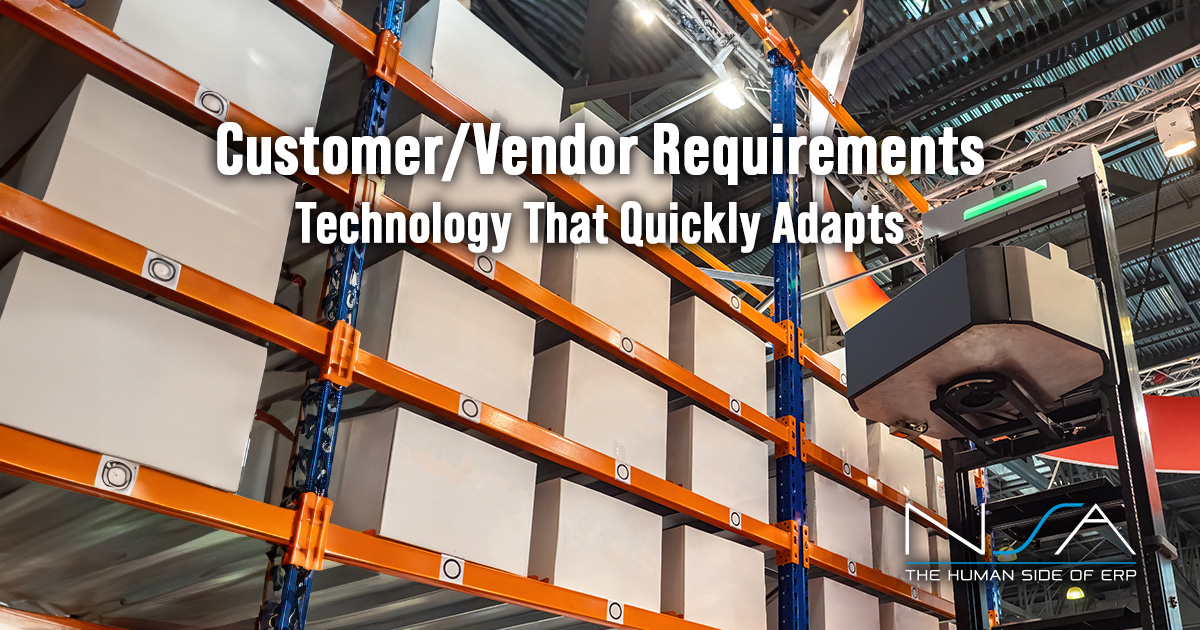Business Intelligence – or BI as it’s known in the industry – is a way for companies to make changes and track progress to improve daily business operations and long-term profitability. Business intelligence is not a data-dump; rather, it’s a comprehensive system for tracking, monitoring, and adapting to improve the overall customer experience and distribution workflow. To be successful in achieving such goals, there are a few actions and processes that distributors must measure. Here is a list of 6 things distributors can review in their Infor business intelligence reports to improve profitability.
1. Profit margin
Business Intelligence systems (such as those offered through MITS – contact NSA to learn more about MITS business intelligence system and how it integrates with your Infor ERP), allow essential personnel to capture a comprehensive snapshot of profit margins for each customer, not a collective estimate of the entire book of business. BI also allows you to view profit margins for your warehouses, and the products moved in and out of the facility. This allows the distributor to reflect better customer pricing, as well as guide the sales team to focus on profitable avenues and relationships. The potential to increase profits improves immediately because the immediate access and individualized profit margin snapshots allows for targeted profit margin increases and movement.
2. Bad debts
Bad debts are killing your company’s bottom line, and you may not even realize it if your BI system is out of date. Just as stale inventory and excess inventory weighs down on the company’s profits, so do bad debts. Infor business intelligence methods must provide essential personnel and sales teams access to reports about bad debts to avoid incurring larger debts with the same client. It also allows companies to continue to collect on bad debts. Customers who do not pay can be denied shipments, they can be removed from sales calls, and they can be reconfigured to ensure paying clients receive priority shipments.
3. Stale inventory
Too many warehouses are stocked with inventory that they simply can’t move, and the worst part about it is that some don’t even realize they have it or that customers aren’t buying it. The problem with large-scale data dumps is the absence of individual records because they are too difficult to find. Infor BI systems permit users to locate which inventory products the customers are buying, and which ones remain stagnant. Where some distributors overwhelm themselves with stale, profit-sucking inventory is when they try to stock all of the accessories and supplemental inventory that fits each inventory item. Business Intelligence aims to relieve warehouses of inventory problems by reporting which accessory items actually move when the initial inventory item is purchased, and which ones continue to sit on the shelves. Ridding the shelves of unnecessary accessories and supplemental items clears space for profit-proven inventory.
4. Stock-out
If your warehouse isn’t aware of a stock-out until it actually has to say the words, it’s time to rethink the BI plan. Stock-out affects all aspects of the business, especially sales. After discussing stale inventory, it is important for companies to understand what can replace it instead to reduce stock-out. Essentially, stock-out means your company could not keep up with the demand of specific products, and when a customer tried to order it, the distributor could not provide the item because they ran out and did not have the systems and foresight in place to replace it before the stock-out occurred. Tracking the potential for stock-out does a number of things: it increases annual sales, and it meets the customer’s demand. When customers experience stock-out, they have no problem finding the item somewhere else. Few are willing to wait for your warehouse to reorder it, track it, tag it, and ship it when it arrives.
5. Employee activity
No, we aren’t talking a Big Brother tracking system, but one that allows employees to give up a few tasks, opting for thorough and automated reporting instead. Too many employees are tasked with daily reporting, which means most of the time is spent creating the reports themselves. This takes critical employees away from their daily tasks, and it ceases the cog in productivity. Warehouses that embrace automated Infor reporting business intelligence relieve the daunting task of generating reports so they can get back to the jobs they were hired to do, and make decision based on the more thorough BI analytics.
6. Accessibility
Finally, another critical aspect to track is accessibility. This is something often overlooked by many warehouses because it seems simple – it’s ordered, you find it. But it’s more complicated than cherry picking as needed. Accessibility is strategic. BI allows distributors to identify moveable stock, close-to-dead dead, write-offs, seasonal inventory, and more. It is up to the warehouse to decide where each is. Inventory that moves at higher rates and during specific times should be arranged in a way so that it is easily accessible. This cuts down on processing and shipping time, improving its turnaround time, increasing the space for more profitable inventory, and improving the customer experience overall.
Getting started with business intelligence reporting is easy, and integrating your business intelligence system with Infor ERP is even easier when you contact NSA for assistance. Don’t lag behind, and it you are, know how to track it with business intelligence that works for your bottom-line.



